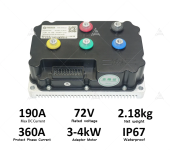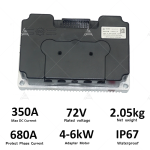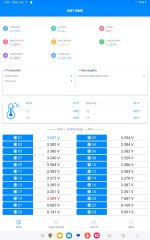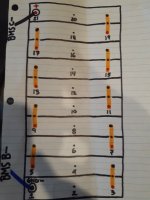I think I'm going to just return the package to sender and call it a day with the controller. It costs like $500 CAD with shipping and everything. If it's not even that much better than the Yuyang King then forget it. I was expecting it to be a massive upgrade turns out its not really.
Yeah Kelly controllers kinda suck. But you said that was the only stuff you could easily find so I assumed you had no other choice.
The better option nowadays is Fardriver. If you still can change then its probably a good idea.
Do I leave the extra wires I don't need to use from the bms? - the wires that go to the battery I mean
Didn't understand what you are talking about
Also, I'm not sure what to do with some other wires it came with and a little button.
The little button is the on/off switch for the BMS. it is to be wired on the little plug with the two black wires. You can replace it for any button of your choice that you can put wherever you want on the bike. I wired it on my BMS box, it is the big red button you can see on the side on my black motorcycle.
I am also uncertain of where to put the temperature sensors.
Anywhere you want. In my case I've put 2 inside the battery between the cells to check the battery temperature, one in the battery box to see the inside of the box temperature and one outside so I can know the outside air temp.
You can also set them as triggers so the BMS cuts power if a sensor gets too hot or too cold. Too cold can be useful for example if you don't want to allow recharge when the temperature is under zero degree C (batteries usually don't like being charged when too cold).
There is a connector that has 2 black wires in it only and I'm not sure what to do with it. It has the same size connector that fits into the bms as the display. The wires are bare ends on the other side.
That's the one for the ON/Off switch I was refering to.
The display came with an easy enough to understand connector that just simply plugs into the back of the display itself and then plugs into the only other spot on the bsm it fits so that's not hard to figure out.. But there are 2 extra wires (red&black) that are loose and I am not sure what to do with them.
The display doesn't look as nice as the ones they did before, I prefered the bigger ones. At least it looks easy to integrate in a dashboard so there's that.
Anyway, the red and black are the power supply, you need to provide some power to the BMS screen. On the old screens you just had to provide any voltage between 24 and 84V. But since its a new, different screen I cannot tell you what voltage it needs, you need to read the manual and see for yourself.
The button is just loose as well.
Yeah, that's so you can replace it with a better/more beautiful button easily if you want.
The temperature sensors are 2 small separate connectors. They are identical. They plug into the BMS and that doesn't confuse me, I am just wondering where to put the actual sensors themselves - I didn't bother to show pictures of the temperature sensors.
Wherever you want, but at the very least one on the battery.
Unless they changed their software, you can't use one as a motor temp sensor because they are limited to 60 degreeC maximum (at least that was the case for all the versions that I worked with, maybe they changed it now, again, read the instructions).
There are no mounting holes so I'm not sure what to do with the bms. My plan was to mount it onto a cutting board that I cut to size, basically just a hard piece of 1/4" plastic. Now I have no idea. I have seen people use hot glue but I'm worried it won't be strong enough to hold it over time same with tape, or the combo of the 2 even. I'd like to fasten it down secure but I'm not seeing anything. Any ideas?
That you'll have to figure out yourself. I don't recommend hot glue because the BMS will heat up when doing the balancing. I suggest using screws , you just need to drill your cutting board and secure the BMS by replacing its screws with longer ones.
You want the BMS to be well secured, it should not wiggle around. Also you must protect it from water. I suggest you find some kind of waterproof electrical box.
You'll also have to protect your battery cells from rain and dirt, building an enclosure is the most time consuming and difficult part on these builds usually.
At the risk of sounding like an annoying gandpa, some of the questions you asked suggest that you didn't read the instructions all too well (screen power, on/off button, etc). You should really focus on doing your homework and read the BMS documentation carefully before doing anything else. It's not rocket science, but it is dangerous stuff, a small mistake can have very disastrous consequences for the hardware as well as yourself.





